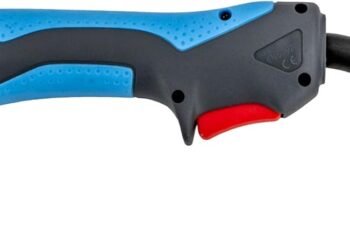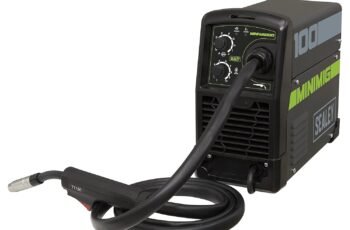Ad Blocker Detected
Our website is made possible by displaying online advertisements to our visitors. Please consider supporting us by disabling your ad blocker.
Selecting the perfect welding machine for your project can feel overwhelming, but breaking it down makes it manageable. Start by considering the type of welding process you need—MIG, TIG, or others. Then, think about power compatibility and the materials you’ll work with. Don’t overlook the importance of brand reputation and how it fits within your budget. Each choice you make is critical and could impact your project’s success. What’s your next step in this journey?
Understanding Different Welding Processes and Machines
When you’re choosing a welding machine, understanding the different welding processes and machines is crucial. There’s a variety of options, each suited for specific tasks. MIG welding is great for beginners, offering a clean weld with minimal spatter. TIG welding requires more skill but provides precision and control, ideal for thin metals and aluminum. Stick welding is versatile and works well outdoors or on rusty surfaces. Flux-cored welding, similar to MIG, is excellent for thicker materials. Each process requires specific equipment, so choose based on your project’s needs. GMAW is best for flat and horizontal positions, which can impact your choice if your project involves such orientations. Don’t forget about portability; some machines are compact, making them easier to move around.
Evaluating Power Source and Voltage Requirements
How do you determine the right power source and voltage for your welding machine?
First, consider your location. Most home projects use single-phase power (120V/240V), while industrial tasks often need three-phase power for machines above 250 amps. Inverter welders are advantageous in this regard as they offer energy efficiency through power factor correction (PFC) and are compatible with both single-phase and three-phase power sources. At home, standard circuits support ~130 amps using 13A plugs, but higher demands require 16A or 32A outlets.
For machines like the Lincoln Square Wave TIG 200, dual-voltage capability allows flexibility, but peak performance requires 240V.
Key Technical Specifications to Consider
After understanding your power source and voltage needs, it’s time to focus on the technical specifications that truly define a welding machine’s capability. First, ensure the amperage range matches your material thickness requirements; thicker metals need higher amperage. Check the duty cycle to know how long you can weld before needing to cool down. When selecting a welding process, identify the types of projects you’ll be working on, such as sculptures, car restoration, or equipment repair, and determine the metal thickness for your most frequent projects to ensure the chosen process aligns with your long-term goals. Heat input control, whether via foot pedals or triggers, provides precision. Choose current settings (DC, AC, or both) based on your material, like using AC TIG for aluminum. Evaluate the shielding gas needs, such as pure argon for stainless steel or argon-helium blends for thicker steels. Lastly, consider portability and versatility, especially if you need multiprocess capability or remote controls for dynamic projects.
Assessing Material and Project Suitability
Before diving into a welding project, it’s crucial to assess material and project suitability, ensuring your chosen welding process aligns with the specific materials and design requirements.
First, check material compatibility, focusing on weldability ratings and chemical compatibility—especially for thermoplastics like polypropylene and polyethylene. Use compatibility charts to understand distinct behaviors between materials like aluminum and copper. Remember that material incompatibility is often the root cause of weld failures, highlighting the importance of selecting the right material combinations.
Consider the welding process requirements by matching the material’s thermal properties and joint design with the appropriate welding method, such as ultrasonic or spin welding. Ensure joint design features like wall thickness and weld flute angle are optimal.
Lastly, account for thermal and mechanical constraints, such as melting point disparities and heat dissipation rates, to prevent structural issues during welding.
Brand Reputation and Budget Considerations
When choosing a welding machine, why should you care about brand reputation and budget considerations?
Well, the brand’s reputation often reflects the quality and reliability of their products. Established brands like Miller, Lincoln, and ESAB offer advanced machines for professionals, ensuring durability and precision. If you’re on a tighter budget, consider brands like YesWelder and Forney, which provide affordable yet feature-rich options. Balancing these factors helps you avoid overspending on unnecessary features or sacrificing quality for a lower price. Mid-range options like Hobart and Everlast offer a mix of performance and affordability, appealing to frequent users. Ultimately, aligning your budget with a reputable brand ensures you get a welding machine that meets your needs without compromising on quality. Brands like ArcCaptain provide high-quality machines for both amateur and seasoned welders, focusing on reliability and user-friendly interfaces, making them suitable for DIY enthusiasts.
Conclusion
Choosing the right welding machine is crucial for your project’s success. Start by understanding different welding processes to match your needs, whether it’s MIG or TIG. Make sure the machine is compatible with your power source and check its amperage range and duty cycle for the materials you’ll work with. Don’t forget to balance your budget with brand reputation, opting for trusted names. By considering these factors, you’ll ensure a successful and efficient welding experience.



